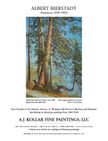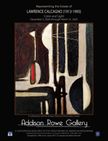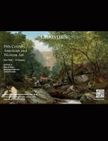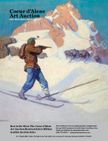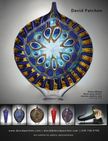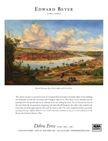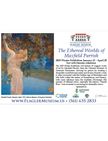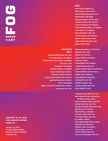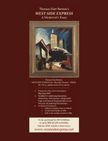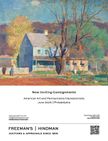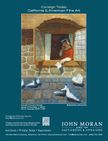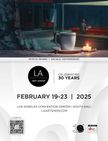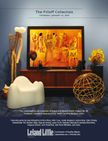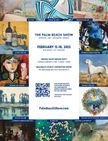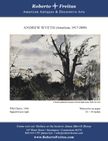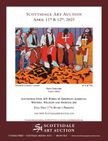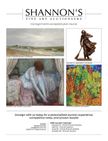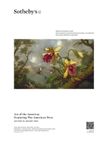The Smithsonian American Art Museum in Washington, D.C., is home to the largest collection of American sculpture in the world. The last major public survey of American sculpture was 50 years ago. The museum’s current exhibition, The Shape of Power: Stories of Race and American Sculpture, is the result of exhaustive research and collaboration among a number of institutions and scholars. It “examines the role of American sculpture, from the 19th century to today, in understanding and constructing the concept of race in the United States and how this medium has shaped the way generations have learned to visualize and think about race.”
 Daniel Chester French (1850-1931), Maquette: Personification of “America” for Four Continents, U.S. Custom House, ca. 1907. Plaster and metal, 75/8 x 6¼ x 67/8 in. Cooper Hewitt, Smithsonian Design Museum, Gift from the Trustees of the Corcoran Gallery of Art.
Daniel Chester French (1850-1931), Maquette: Personification of “America” for Four Continents, U.S. Custom House, ca. 1907. Plaster and metal, 75/8 x 6¼ x 67/8 in. Cooper Hewitt, Smithsonian Design Museum, Gift from the Trustees of the Corcoran Gallery of Art.Stephanie Stebich, the museum’s former director, writes in the exhibition catalogue, “From these critical conversations both inside and outside the museum, an essential question arose for the curators: how would we like people to feel when approaching this material? In short, our goal is to encourage visitors to feel invited into a transparent and honest dialogue about the histories of race, racism, and the role of sculpture, art history, and museums in shaping these stories. Most importantly, we want people to feel cared for as they navigate the difficult histories that anchor this project. And we seek to create space for the experiences that the reader and visitor bring to this work, for them to see how they fit into these stories and their role in the future. Art has always reflected society’s values, aspirations and challenges, and sculpture has the power to influence and shape the collective consciousness. As you navigate through these works, I invite you to remain open to the discomfort that comes from confronting this material and realize that through this discomfort growth happens, both individually and collectively.”
The exhibition refutes the preconception of American sculpture being heroic white-marble figures rooted in Greece and Rome. It includes 82 sculptures created between 1792 and 2023 ranging in size from palm-sized coins to monumental statues created from diverse media such as bronze, marble, shoes, paper and hair.

Isamu Noguchi (1904-1988), My Arizona, 1943. Fiberglass and plexiglass, 18¼ x 18¼ x 45/8 in. The Isamu Noguchi Foundation and Garden Museum, New York.

The Shape of Power is organized by Karen Lemmey, Lucy S. Rhame Curator of Sculpture at the Smithsonian American Art Museum; Tobias Wofford, associate professor of art history at Virginia Commonwealth University; and Grace Yasumura, assistant curator at SAAM.
They write in their introduction to the exhibition catalogue, “By the end of the 20th century, the Human Genome Project had scientifically proven that race is not tied to genetics and that ‘on average about 99.9 percent of the genomes of all living humans are the same.’ And yet many people continue to see race as biological and physical rather than, as it is defined by natural and social scientists Joseph Graves Jr. and Alan Goodman, ‘a worldview and social classification that divides humans into groups based on their appearance and assumed ancestry, and that has been used to establish social hierarchies.’ One of the goals of The Shape of Power is to use sculpture to make evident that, as [authors Barbara J.] Fields and [Karen E.] Fields stated, ‘what Americans designate by the shorthand ‘race’ does not depend on physical difference…and owes nothing at all to nature.’ A broader audience might find these facts more apparent and convincing by seeing them through sculpture, rather than by reading scholarly papers and scientific reports.”

Augusta Savage (1892-1962), Gamin, ca. 1929. Painted plaster, 9 x 5¾ x 43/8 in. Smithsonian American Art Museum, Gift of Benjamin and Olya Margolin 1988.57.
Hiram Powers (1805-1873) modeled his sculpture The Greek Slave in 1843 and carved it in pure white marble around 1873. The full-length female nude depicts a bound prisoner being sold in a Turkish slave market during the Greek War of Independence. The museum notes, “It depicts a fully nude white woman in chains standing beside a locket and cross that signify her Christian piety and faithfulness…Many Americans quickly associated the sculpture with the enslavement of African Americans, with some abolitionists using the portrayal of an enchained white woman to elicit sympathy for their cause.” It was the first sculpture of a nude woman to tour the United States in the 19th century and was often shown with separate viewing hours for men and women.
In her catalogue essay, Lemmey writes, “Broadly speaking, the idealized body of a white woman was the default, normative setting for 19th-century American sculpture, and this ideal argued for ‘the supposed correlation between personal beauty and human virtue.’ Whiteness, as it was constructed for 19th-century women specifically, dictated that their character be modest, demure, pious and worthy of motherhood. These attributes were visually conveyed in sculptures that represented this white female body as delicate, graceful, lithe, youthful and composed—properties that women who were not white were largely denied association with. The prevalence of this visual trope demonstrates how racial whiteness was, and in many ways remains, the presumed standard of American society and culture.”

John Rogers (1829-1904), The Wounded Scout, a Friend in the Swamp, patented 1864. Plaster with oil paint and iron armature, 221/8 x 111/8 x 8¼ in. Smithsonian American Art Museum, Gift of John Rogers and Son 1882.1.5.
John Rogers (1829-1904) sculpted mass-produced plaster “groups,” sometimes in editions of 20,000. Their realism was a departure from the neo-classical norms of 19th-century sculpture. Lemmey writes, “The barefoot, raggedly dressed Black man depicted in Rogers’ plaster sculpture The Wounded Scout, a Friend in the Swamp is in the process of self-emancipating. While running for his life, he takes the risk to stop and assist a gravely injured white Union soldier. The soldier’s whiteness relies on the supporting role of the Black figure—a relationship often used in American literature in which white protagonists depend upon what [Toni] Morrison called the ‘complementarity of a figure who can be assumed to be in some way bound, fixed, unfree, and serviceable.’ These types of racialized relationships evident within ‘Rogers Groups,’ as they were marketed, reached beyond the pedestal of the larger, more public sculpture into a smaller form that helped construct and reinforce whiteness within the domestic parlors they adorned, packaging racist hierarchies into saccharine, sentimental vignettes that cozily fit in the Victorian setting.”
At the turn of the 20th century, “new realism” arose in opposition to classical tradition. Augusta Savage (1892-1962) sculpted Gamin around 1929, using her nephew as a model. In his catalogue essay, James Smalls, professor and chair of the department of visual arts at the University of Maryland, Baltimore County, writes about the movement: “It was an approach to art that depicted the contemporary social realities of race, class, and gender while focusing on the everyday lives, activities, and appearances of ordinary people. Instead of idealizing, classicizing, or stylizing her subject…Savage applied this form of realism and ethnographic scrutiny to an African American youth symbolic of Black working-class pride and individuality.”

Hiram Powers (1805-1873), The Greek Slave, modeled 1843, carved ca. 1873. Marble 44 x 14 x 13½ in. Smithsonian American Art Museum, Gift of Mrs. Benjamin H. Warder 1920.3.3.

Abastenia St. Léger Eberle (1878-1942), Girl Skating, modeled by 1906, inscribed ’07. Bronze, 127/8 x 11 ½ x 6¾ in. Smithsonian American Art Museum, Museum purchase through the C.K. Williams Foundation 2011.29.
Tess Korobkin, assistant professor of American art in the department of art history and archaeology at the University of Maryland, College Park, writes about an oft-forgotten aspect of World War II. “In May 1942, after Executive Order 9066 required the forced relocation and incarceration of West Coast residents of Japanese descent, [Isamu] Noguchi [1904-1988] voluntarily arrived at the Poston Internment Camp in Arizona to run an art and craft program for detainees. Noguchi described [his sculpture] My Arizona as ‘a recollection of seven months in an Arizona desert camp for Japanese Americans at Poston near the Colorado River, where the hot sun shines interminably.’

Virgil Ortiz (Chochiti Pueblo), Pueblo Revolt 2180, 2018-19. White bentonite clay with bee-weed (spinach) paint, 145/8 x 127/8 in. Smithsonian American Art Museum, Museum purchase through the Kenneth R. Trapp Acquisition Fund 2022.54.
“The flatbed sculpture is divided into four quadrants, developed in volumes that reference topography—a hill, a pyramid, an open-mouthed volcano, and, at upper left, a magenta plastic sheet hovers above, perhaps evoking the interminable heat of the desert sun. The viewer’s perspective looking down on this small-scale, conjoined landscape recalls airborne vision, which in turn evokes military surveillance, weaponry deployed from the sky, as well as the gaze of the state on racialized groups forced into internment camps.”

Sargent Johnson (1888-1967), Mask, 1935. Copper with gilding, 11 x 5¼ x 6¼ in. Smithsonian American Art Museum, Gift of International Business Machines Corporation 1966.27.4
Nearly a century earlier, the federal government began a reservation system that forced Indigenous people from their homeland onto land “reserved” for them.
Virgil Ortiz (Cochiti Pueblo) propels history into the future in his 2019 painted clay pot, Pueblo Revolt 2180. He explains, “The Pueblo Revolt, the first American revolution, isn’t taught in American schools, nor is it in our history books. My mission…is to create a narrative of the revolt utilizing the various mediums I work with and make it more interesting and relevant to the next generation.” His childhood interest in science fiction manifests in his contemporary interpretations of the revolt. In his imagined future, pueblo warriors defend their homeland again.

Meta Vaux Warrick Fuller (1877-1968), In Memory of Mary Turner as a Silent Protest Against Mob Violence, 1919. Painted plaster, 20 x 7½ x 7½ in. Museum of African American History, Boston and Nantucket.

Maggie Thompson (Fond du Lac Band of Lake Superior Chippewa), Family Portrait, 2012. Rayon, wool, and dye, three textiles: 72 x 36 in. each. Minneapolis Institute of Art, The Jane and James Emison Endowment for Native American Art 2015.61a-c.
Maggie Thompson (Fond du Lac Band of Lake Superior Chippewa) “sculpts” in fiber. Family Portrait, 2012, consists of a triptych of dyed rayon and wool panels of eight rectangles. Some of the rectangles are dyed red to signify the “blood quantum” or amount of Indian blood in herself, her father and her European-American mother.
Jane Carpenter-Rock, acting director of SAAM comments, “As stewards of the largest collection of American sculpture in the world, SAAM has a vital responsibility to foster conversations about the role sculpture has played in shaping our ideas of race in the United States, from its historical roots to contemporary perspectives by leading artists of the times in which these works were created. The presentation of the artworks in The Shape of Power exhibition are an invitation to think deeply and openly to engage with ideas that are crucial to our understanding of the past and our present.” —
Through September 14, 2025
The Shape of Power: Stories of Race and American Sculpture
Smithsonian American Art Museum
G Street Northwest & 8th Street NW, Washington, DC 20004
(202) 633-1000, www.si.edu/museums/american-art-museum
Powered by Froala Editor




